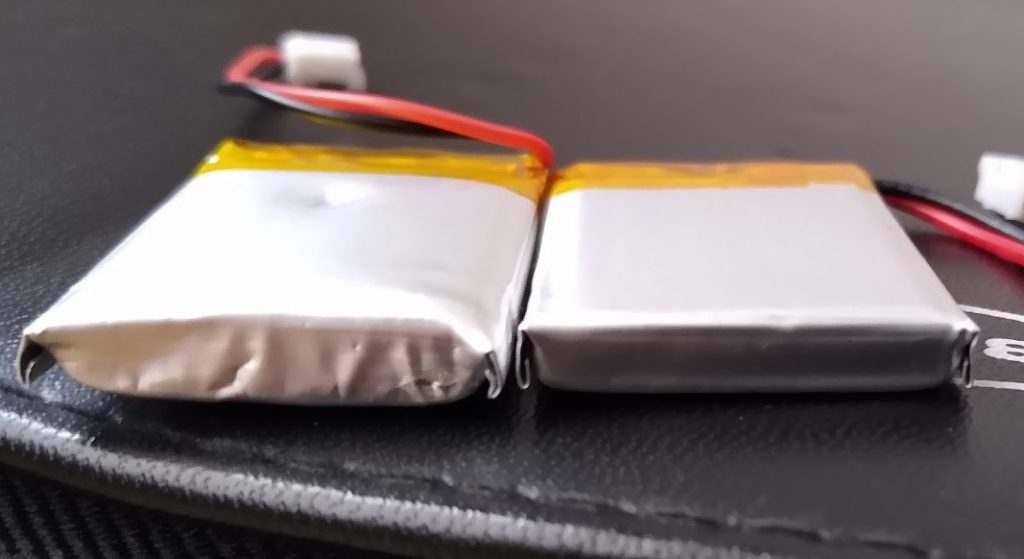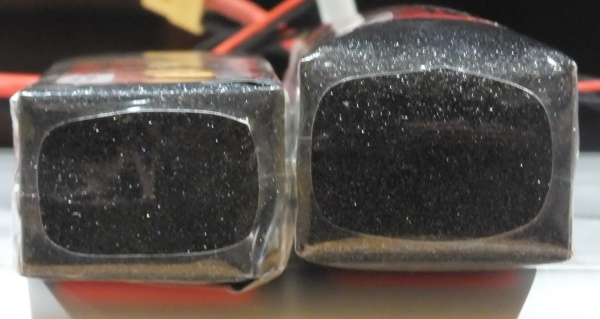Swollen LiPo Battery: How to Dispose/Recycle

In this GH Armory blog we will talk about “How to Dispose/Recycle Swollen LiPo Battery”. This can be a real problem that you may face in the near future or already have.
Recently at one of our weekend gel blaster games, a LiPo battery started to fail. It is something that should not be joked about or to be taken lightly.
Recycling lithium polymer batteries would be the best method in this day and age but sometimes that is not possible due to circumstances or location.
The inevitable question for a hobbyists is how to get rid of old and damaged LiPo(lithium polymer) batteries?
They can extremely dangerous if not handled correctly, causing fire and even explosions. So lets talk about how you can dispose of LiPo batteries safely and please read the entire blog as all the information is very helpful!
Swollen Lithium Polymer Batteries
A swollen LiPo battery can occur due to a variety of reasons, maybe you tripped over and smashed your blaster were the battery is located or you over-discharge or over-charge battery.
If you notice a swollen battery it is safest to stop using it immediately and dispose of it correctly.
If you are at a indoor game field talk with someone that operates the field and ask them what there procedures are for dealing with the problem.
Other wise the question at home would be: How to throw away/dispose Swollen LiPo battery correctly?
LiPo Battery Disposal Opening Summary
When disposing LiPo battery, the goal is to discharge them completely until there is no charge left (0 volts in ALL cells!). This is to make sure that they won’t burst into flames when punctured. Finally take the discharged battery to your local battery recycling facility.
Final step, Take the discharged battery to your local battery disposal/recycling facility or throw it in the normal rubbish provided they are COMPLETELY discharged.
Keep reading to find out how to do this!
Easy Method
Check your local director or the internet (google search) and see if there is a local battery disposal service, if so it is the easiest way to get a potentially very dangerous object away from your house hold.
Effective Methods for Discharging Swollen LiPo Battery
Other good ways to discharge your batteries for disposal includes the following …
- High Power Resistors.
- Dedicated battery discharger
- Some new advanced battery charger units can do this, with a “Destroy battery” option.
- Salt Water (not recommended)
Using LiPo Charger to Discharge Swollen LiPo Battery
Your LiPo charger might be capable of discharging your battery. If you do so, remember to discharge it at a small current for safety, e.g. at 1/10 C, for example, for a 2000mAh 50C pack, discharge at 0.2A (2000/10=200mA).
However most LiPo chargers have a cut-off voltage of 3V, it won’t discharge your battery further once it reaches 3V per cell. Because chargers are designed to work with batteries only at their safe voltage range. If this is the case, you might want to consider the other methods in this guide instead.
Note: The iMax B6 charger can be configured to go below the 3 volt level using a custom setting.
Light Bulb Discharge Method for Swollen LiPo Battery
Light bulb is a popular option for discharging LiPo batteries, because it’s fast and cheap.
There are tutorials on the internet, that show you how to built a Halogen Bulb Discharger. Google it find out how to make one! Here is an example of one, if you are tech savvy.
Do NOT use LED type of light bulb, as they have “forward voltage” which means when voltage drops below a certain level, it will simply stop discharging leaving a small amount of charge in the battery. Also LED are more energy efficient which means it will take longer to discharge. Always use Halogen bulbs or bulbs that are NOT energy efficient.
You can also use some kind of resistive load instead of light bulb, an example of this is a radial ceramic resistor. For 2S or 3S Lipo, you can also use 150ohm 2W resistors.
Note: This method is used in the Homemade disposal options below!
Homemade Battery Disposal
Salt Water Method for Dead/Swollen LiPo Battery (not recommended)
This is not the most recommended method, because it’s slow and ineffective.
Salty water is conductive and it discharges the battery slowly over time. It’s also said that salt causes chemistry reaction with the substances in the LiPo battery, and neutralizes the Lithium. However I am not a chemist, so I hope someone can verify this theory.
However the problem is that salt water might not completely discharge your lipo. Corrosion can take place, where the exposed metal of the connectors/wires will have a layer of insulator building up in salt water. Eventually the electrical conductivity would slow down, even stop the discharging entirely.
The advantage is that your battery is relatively safer to discharge as it’s immersed in water.
- Get a plastic container which you can afford to throw away, fill it with cold water
- Mix it with salt and make sure it’s dissolved completely. I always use about 30g of salt per litre of water and that has been giving me good result
- Put the battery in the salty water, and leave it somewhere fire proof for two weeks. Depending how much charge it had originally, you might want to leave it longer
- Finally, wrap the battery with paper and it’s ready to be thrown away
Sand in a Bucket for Dead/Swollen LiPo Battery
The first task is to drain the battery to 0V as Lithium polymer batteries are safe if carrying no voltage then you need to ensure no more charge can build up, the following will guide you through it.
- Grab a bucket of sand and place it outside with the battery inside.
- Connect an led or small lamp to the battery and drain it completely, leave connected for 1 day after the led stops glowing.
- Cut/Remove the connectors off the battery.
- Strip the wires
- Join the red and black wires to create a short circuit and prevent any build up of voltage.
- LiPo Battery successfully stabilized, and you can safely put it in the regular trash or take it to a disposal/recycling facility.
A slow discharge produces less heat and is much safer then draining the battery fast with a motor or high load connection.
Physical Destroy Method of Swollen LiPo Battery
This is the least recommended method because it’s dangerous. Actually, I don’t recommend it at all. People have used a firearm to shoot through the battery or a nail to puncture it, or use hammer or brick to break it and let it ‘explode’.
This is probably the quickest method, but fire hazardous and the smoke is not good to breath in.
Please DO NOT try these method as it clearly VERY dangerous and may cause Serious Injury or DEATH!
Best Method for discharging and disposal of a LiPo Battery?
The halogen light bulbs discharger method to completely discharge the pack first seems the safest and most effective.
After completely draining the battery, cut the connectors and twist the discharge leads together to ensure there is no energy left in the pack (+ and -).
This way it normally only take less than an hour which is far more efficient than dipping the battery in salt water for weeks.
It’s useful to save the connectors especially the balance lead, if you have one damaged on a good battery pack you can use it for replacement.
After that is done, the battery can be safely disposed or at the correct disposal facility / battery recycling facility.

Checking Voltage
Before throwing the battery out, you want to check there is no charge left in it (voltage is close to 0V).
Note that most battery checkers don’t work well when voltage drops below 3V per cell, and will report “no cell present”. Therefore it’s best to use a multimeter in this case, to make sure the cells are completely dead!
A few tips on using LiPo (Lithium Polymer) Batteries:
- Always charge LiPo battery supervised (Keep them in sight at all times)
- Always use the balance charging (balance plug)
- Always use a lipo-safe bag if you have one while charging the battery in case of failure.
- Always dispose LiPo batteries correctly.
- NEVER short a LiPo battery, this will cause a short and the battery may explode!
- NEVER try to use damaged or puffed up LiPo batteries.
- NEVER over-discharge a lipo, it will reduce the life span, and might cause safety issue.
Follow these methods at your own risk, and do everything necessary to prevent a fire. Consult a battery professional if you are in doubt.
Keep away from human and animal when you are doing any of the above and wear safety gear (eye protection).
Summery
ALWAYS remember to store you LiPo batteries safely! Using a lipo rated container to reduce any potential accidents.
So that wraps up this blog, also see our related blogs on …

